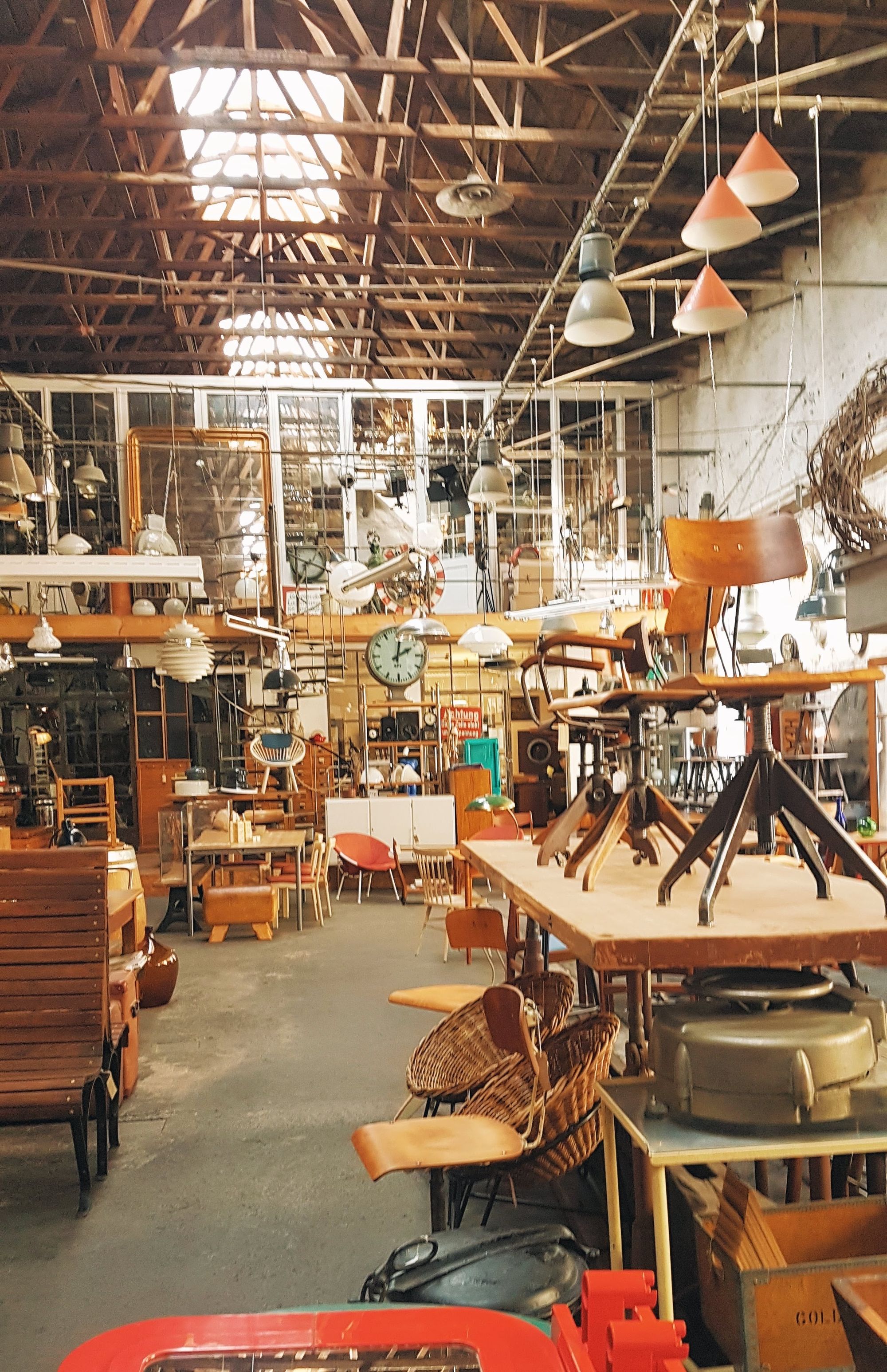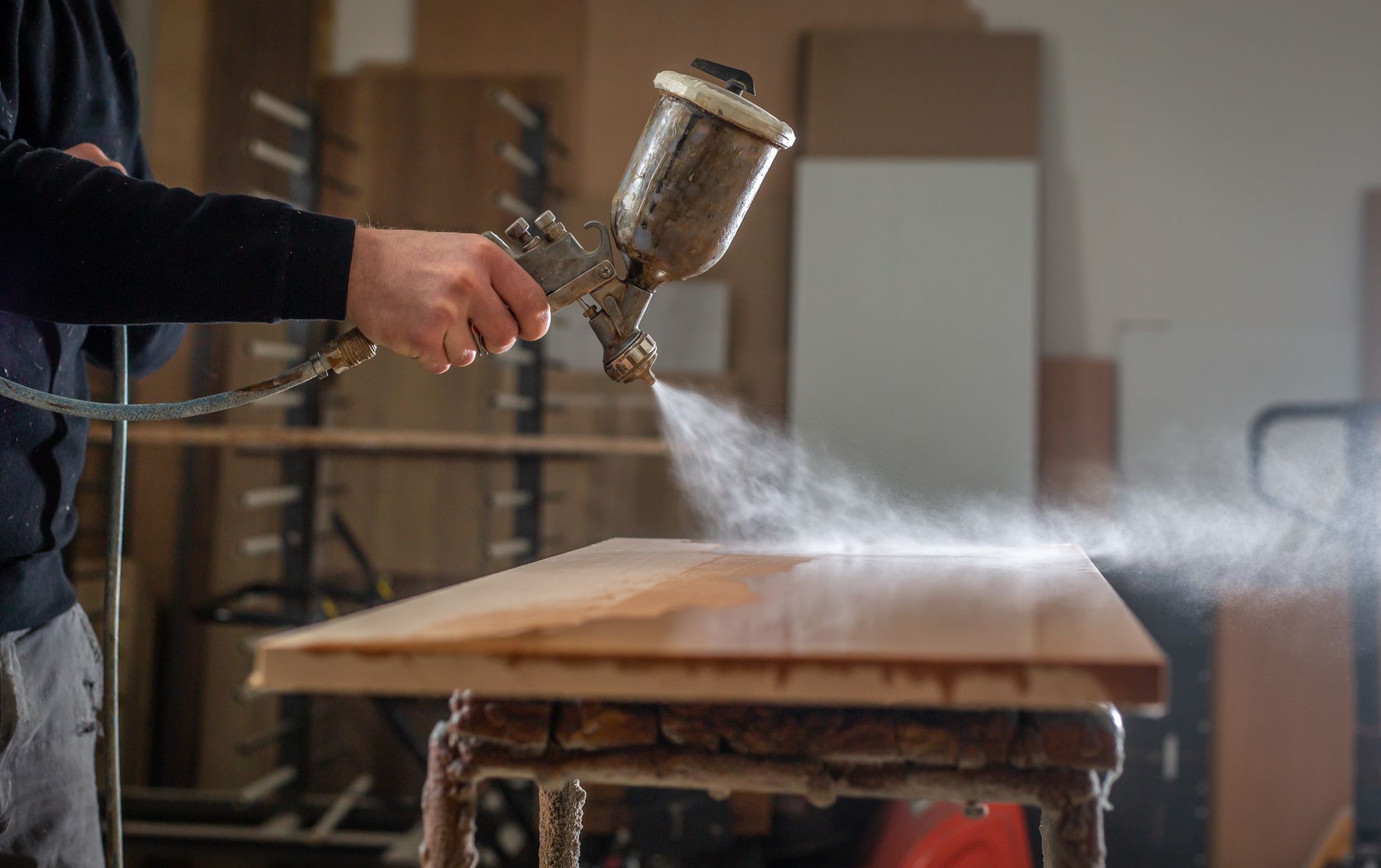The online furniture market is expected to grow at a CAGR of 10.6% from 2021 to 2028, driven by increasing internet penetration and rising demand for home decor and furnishings. (Source: Allied Market Research)
The global furniture manufacturing market is projected to grow at a CAGR of 3.8% from 2021 to 2028, driven by increasing demand for eco-friendly and sustainable furniture products. (Source: Fortune Business Insights)
The use of automation and robotics in furniture manufacturing is expected to grow at a CAGR of 9.9% from 2020 to 2027, driven by increasing demand for high-quality, customized furniture products. (Source: ResearchAndMarkets)
The shortage of skilled labor is a significant challenge for the furniture manufacturing industry, with a survey finding that 87% of manufacturers reported difficulty in finding skilled workers. (Source: National Association of Manufacturers)

The furniture manufacturing industry is a dynamic and growing sector that produces a wide range of products, from household furniture to office equipment.
As is evident from the statistics mentioned above, while the industry presents numerous opportunities for growth and profitability, it also faces significant challenges that manufacturers need to address in order to remain competitive.
In this context, it is important to understand the key opportunities and challenges facing the furniture manufacturing industry, as these can impact the success and sustainability of businesses operating in this sector.
This knowledge can help manufacturers to make informed decisions and develop effective strategies to navigate the complex landscape of the furniture industry.
This article will explore some of the key opportunities and challenges facing the furniture manufacturing industry today by covering the following topics:
- About Furniture Manufacturing Industry
- Importance of the Furniture Manufacturing Industry
- Opportunities in the Furniture Manufacturing Industry
- Challenges in the Furniture Manufacturing Industry
- How to Capitalize on the Opportunities in the Furniture Manufacturing Industry?
- How to Address Challenges in the Furniture Manufacturing Industry?
- FAQs Related to the Opportunities and Challenges in the Furniture Manufacturing Industry
- How can Deskera Help You with Furniture Manufacturing?
- Key Takeaways
- Related Articles
About Furniture Manufacturing Industry
The furniture manufacturing industry is a sector that produces a wide range of products, including chairs, tables, sofas, cabinets, and other household and office furniture. It is a major contributor to the global economy, with an estimated value of over USD 500 billion in 2020.
The industry comprises of small, medium, and large-scale manufacturers, both domestic and international. The largest furniture manufacturing countries in the world include China, the United States, Germany, Italy, and Poland.
The manufacturing process involves designing, sourcing materials, cutting, shaping, assembling, and finishing furniture products. Many furniture manufacturers are adopting new technologies such as 3D printing and automation to increase efficiency, reduce manufacturing costs, and improve product quality.
Furniture manufacturing also has a significant impact on the environment, with the use of materials such as wood, leather, and foam contributing to deforestation and pollution. As a result, many manufacturers are adopting sustainable practices, such as using recycled or responsibly sourced materials and reducing waste.
The furniture industry is closely linked to other sectors, such as architecture, interior design, and retail. The success of the industry is dependent on consumer demand, which is influenced by factors such as trends, lifestyle changes, and economic conditions.
Overall, the furniture manufacturing industry is an important sector that contributes to the global economy and plays a significant role in shaping the way we live and work.
Importance of the Furniture Manufacturing Industry
The furniture manufacturing industry plays a crucial role in both the economy and society. Here are some reasons why it is important:
- Economic growth: The furniture manufacturing industry contributes significantly to economic growth by creating job opportunities, generating income, and promoting entrepreneurship. The industry is a major employer, providing jobs to millions of people worldwide.
- Design and innovation: Furniture manufacturers continually introduce new designs and products to the market, driving innovation and creativity in the industry. This not only helps to meet changing consumer preferences but also improves the quality of life of people by making their living spaces more comfortable and functional.
- Sustainable production: Many furniture manufacturers are adopting sustainable production practices to reduce the environmental impact of their operations. This includes using eco-friendly materials, minimizing waste, and reducing energy consumption. This helps to protect the environment and promotes a more sustainable future.
- Cultural significance: Furniture has been an integral part of human culture for thousands of years, reflecting the style and character of different societies and eras. The furniture manufacturing industry plays a critical role in preserving cultural heritage by producing traditional and contemporary designs.
Overall, the furniture manufacturing industry is important for economic growth, design and innovation, sustainable production, and cultural significance.
Opportunities in the Furniture Manufacturing Industry
The furniture manufacturing industry provides various opportunities for businesses and individuals, and the key to success in this industry is to identify a niche and offer products or services that cater to specific market needs. Here are some potential opportunities in this industry:
Custom Furniture
Custom furniture can be a great opportunity in the furniture manufacturing industry. With the rise of e-commerce, consumers are becoming more interested in unique and personalized items that reflect their individual styles and taste. Custom furniture allows manufacturers to tap into this trend and offer consumers the ability to create a piece that is tailored to their specific needs.
One of the key benefits of custom furniture is that it can command a higher price point than mass-produced items, as it is considered more unique and exclusive. This can help manufacturers increase their gross profit margins and differentiate themselves from competitors.
In addition, offering custom furniture can also help manufacturers establish a strong brand identity and build a loyal customer base. By working closely with customers to create bespoke pieces, manufacturers can develop a reputation for quality craftsmanship and exceptional customer service, which can improve customer retention and customer loyalty.
However, it is important to note that producing custom furniture requires a high level of skill and expertise. Manufacturers must have a deep understanding of materials, design, and production processes in order to create custom pieces that meet their customers' specifications. This may require additional investment in equipment and training, which can increase production costs.
Overall, while there are challenges to producing custom furniture, it can be a lucrative opportunity for manufacturers looking to differentiate themselves in a competitive market and appeal to consumers' growing desire for unique, personalized products. This way they can maximize their returns on investments.
Sustainable Furniture
Sustainable furniture can be a significant opportunity in the furniture manufacturing industry. As consumers become more environmentally conscious, there is a growing demand for furniture made from sustainable materials and produced using eco-friendly manufacturing processes.
By offering sustainable furniture, manufacturers can tap into this trend and cater to a growing market of consumers who are willing to pay a premium for eco-friendly products.
This can not only increase their profit margins but also help them establish a reputation for being environmentally responsible, which can attract more customers in the long run, leading to higher sales velocity.
Sustainable furniture is typically made from renewable materials such as bamboo, reclaimed wood, and recycled plastic. Manufacturers can also use sustainable production methods such as reducing waste, using non-toxic finishes, and minimizing energy consumption during production.
Another advantage of producing sustainable furniture is that it can help manufacturers comply with environmental regulations and reduce their carbon footprint.
As governments and consumers become more aware of the environmental impact of manufacturing processes, sustainable furniture can become an essential part of a manufacturer's strategy to ensure compliance and reduce their environmental impact.
However, producing sustainable furniture also requires a significant investment in research and development, as well as sourcing sustainable materials and finding eco-friendly production processes. This may increase production costs, which can affect net profit ratio.
Overall, sustainable furniture presents a significant opportunity for furniture manufacturers to differentiate themselves in a competitive market, cater to the growing demand for eco-friendly products, and establish a reputation for environmental responsibility.
While there are challenges to producing sustainable furniture, the potential benefits make it a promising opportunity for manufacturers looking to stay ahead of the curve in a rapidly changing market.
Online Sales
Online sales can be a significant opportunity in the furniture manufacturing industry. With the rise of e-commerce, consumers are increasingly turning to online shopping for their furniture needs. Manufacturers can tap into this trend by establishing an online presence and leveraging digital marketing to reach a wider audience.
One of the key advantages of online sales is that it allows manufacturers to reach customers outside of their local market. By offering their products online, manufacturers can expand their customer base beyond their physical location and access a global market. This can lead to increased sales and revenue.
In addition, online sales can also help manufacturers reduce their overhead costs. By selling online, manufacturers can eliminate the need for physical storefronts and reduce their inventory carrying costs. This can result in significant cost savings and increased profit margins.
Furthermore, online sales allow manufacturers to offer customers a wider range of products and customization options. By using digital tools, manufacturers can create virtual showrooms and allow customers to customize their furniture online. This not only increases the convenience for customers but also streamlines the production process for manufacturers.
However, there are challenges to establishing an online presence in the furniture manufacturing industry. Manufacturers must invest in website design, digital marketing, and logistics in order to establish a successful e-commerce operation. They must also ensure that their products are shipped safely and arrive in good condition.
Overall, online sales present a significant opportunity for furniture manufacturers to expand their customer base, reduce costs, and increase revenue. While there are challenges to establishing an online presence, the potential benefits make it a promising opportunity for manufacturers looking to stay competitive in a rapidly changing market.
Smart Furniture
Smart furniture can be a significant opportunity in the furniture manufacturing industry. With the growing prevalence of smart home technology, consumers are increasingly interested in furniture that integrates with their smart devices and offers additional features and functionality.
By offering smart furniture, manufacturers can tap into this trend and cater to a growing market of tech-savvy consumers who are willing to pay a premium for furniture that offers additional features and convenience.
Smart furniture can include a range of features such as wireless charging, built-in speakers, and LED lighting. It can also integrate with other smart devices in the home, such as voice assistants and smart thermostats, to create a seamless and integrated living experience.
In addition, smart furniture can also provide valuable data to manufacturers about how their products are being used. By collecting data on usage patterns and preferences, manufacturers can use this information to improve their products and offer more personalized and customized experiences to customers.
However, producing smart furniture requires a significant investment in research and development, as well as expertise in smart technology and user experience design. Manufacturers must also ensure that their products are secure and comply with data privacy regulations.
Overall, smart furniture presents a significant opportunity for furniture manufacturers to differentiate themselves in a competitive market, cater to the growing demand for technology-integrated products, and collect valuable data to inform product development.
While there are challenges to producing smart furniture, the potential benefits make it a promising opportunity for manufacturers looking to stay ahead of the curve in a rapidly changing market.
Contract Furniture
Contract furniture can be a significant opportunity in the furniture manufacturing industry. Contract furniture refers to furniture that is designed and manufactured for commercial use in public spaces such as hotels, restaurants, offices, and healthcare facilities.
The demand for contract furniture is driven by the growth of these industries and the need for durable, high-quality furniture that can withstand heavy use and frequent cleaning. Contract furniture must also comply with safety and regulatory standards and be designed to meet the specific needs of the industry and the space it will be used in.
By offering contract furniture, manufacturers can tap into this growing market and cater to the unique needs and requirements of commercial clients. This can lead to increased sales and revenue and provide a more stable customer base than individual consumers.
In addition, contract furniture can also provide manufacturers with opportunities for customization and product development. Commercial clients often have specific design requirements and may be willing to pay a premium for customized furniture that meets their needs.
However, producing contract furniture also requires a significant investment in research and development, as well as expertise in designing for specific industries and complying with safety and regulatory standards.
Manufacturers must also have the ability to produce furniture in large quantities and have a strong understanding of supply chain management.
Overall, contract furniture presents a significant opportunity for furniture manufacturers to tap into a growing market, offer customized products, and establish long-term relationships with commercial clients.
While there are challenges to producing contract furniture, the potential benefits make it a promising opportunity for manufacturers looking to diversify their customer base and stay competitive in a rapidly changing market.
Furniture Repair and Restoration
Furniture repair and restoration can be a significant opportunity in the furniture manufacturing industry. With the increasing popularity of vintage and antique furniture, there is a growing demand for furniture repair and restoration services.
By offering furniture repair and restoration services, manufacturers can tap into this trend and provide additional value to customers. This can lead to increased customer loyalty and repeat business.
In addition, furniture repair and restoration services can also provide manufacturers with opportunities for revenue diversification. By offering repair and restoration services, manufacturers can generate additional income from their existing customer base and attract new customers who may not have considered them for their furniture needs.
Furthermore, furniture repair and restoration services can also help manufacturers reduce waste and contribute to sustainability efforts. By repairing and restoring furniture, manufacturers can extend the lifespan of their products and reduce the need for new manufacturing.
However, offering furniture repair and restoration services requires a significant investment in training and expertise. Manufacturers must have skilled technicians who can perform high-quality repairs and restorations, as well as the necessary equipment and materials.
Overall, furniture repair and restoration presents a significant opportunity for furniture manufacturers to provide additional value to customers, generate additional revenue, and contribute to sustainability efforts.
While there are challenges to offering repair and restoration services, the potential benefits make it a promising opportunity for manufacturers looking to diversify their business and stay competitive in a rapidly changing market.
Growing Demand
Growing demand for furniture products presents a significant opportunity for the furniture manufacturing industry. This demand is being driven by several factors, including increasing urbanization, rising disposable incomes, and changing lifestyles.
As more people move into urban areas, the demand for furniture products for apartments, flats, and smaller homes is on the rise. Additionally, as disposable incomes increase, consumers are more willing to spend on home furnishings and decor, leading to higher demand for furniture products.
Moreover, changing lifestyles have also influenced the demand for furniture products. With more people working from home, there has been an increased demand for home office furniture. Similarly, as people spend more time at home, there has been a rise in demand for outdoor furniture products, such as patio sets and outdoor lounges.
The growing demand for furniture products provides an opportunity for manufacturers to increase their production capacity and expand their customer base.
Manufacturers can cater to different segments of the market, such as residential, commercial, and hospitality, and offer a wide range of products to meet the diverse needs and preferences of customers.
Overall, the growing demand for furniture products is a significant opportunity for the furniture manufacturing industry, and manufacturers need to adopt effective strategies to meet this demand and remain competitive in a rapidly evolving market.
Automation and Robotics
Automation and robotics present a significant opportunity for the furniture manufacturing industry. The industry is highly labor-intensive, and the adoption of automation and robotics can help manufacturers improve productivity, reduce labor costs, and improve product quality.
By leveraging automation and robotics, manufacturers can automate repetitive and low-value tasks, such as cutting, drilling, and sanding, which can help reduce the need for manual labor and improve production efficiency. Additionally, automation can help reduce the risk of workplace accidents and injuries, creating a safer work environment for employees.
Moreover, the use of automation and robotics can help improve product quality and consistency. Robots can perform tasks with a high degree of precision and accuracy, resulting in less waste and higher-quality finished products.
To take advantage of these opportunities, manufacturers need to invest in automation and robotics technology and develop the necessary skills to operate and maintain this equipment. They can also collaborate with technology providers and suppliers to develop customized solutions that meet their specific needs and requirements.
Overall, the adoption of automation and robotics presents a significant opportunity for the furniture manufacturing industry, enabling manufacturers to improve productivity, reduce labor costs, and improve product quality, ultimately driving growth in the industry.
Data Analytics
Data analytics presents a significant opportunity for furniture manufacturers to improve their operations and gain a competitive advantage. Here are a few ways in which data analytics can be leveraged in the furniture manufacturing industry:
- Predictive Maintenance: Furniture manufacturers can use predictive maintenance models to identify potential equipment failures before they occur, reducing downtime and improving overall efficiency.
- Demand Forecasting: By analyzing historical sales data and market trends, furniture manufacturers can forecast future demand and adjust production accordingly, reducing waste and optimizing inventory management.
- Supply Chain Management: Data analytics can be used to optimize supply chain operations, identify potential bottlenecks, and improve efficiency in sourcing, manufacturing, and distribution.
- Customer Insights: By analyzing customer data, furniture manufacturers can gain insights into customer preferences, behavior, and purchasing patterns, enabling them to develop personalized products and marketing strategies.
- Quality Control: Data analytics can be used to monitor and analyze product quality data, identifying potential defects and improving overall product quality.
Overall, data analytics presents a significant opportunity for furniture manufacturers to improve their operations, reduce costs, and enhance customer satisfaction.
Challenges in the Furniture Manufacturing Industry
The furniture manufacturing industry faces several challenges that require manufacturers to be flexible, innovative, and responsive to changing market conditions.
By addressing these challenges and staying up-to-date with industry trends, manufacturers can increase their chances of success and profitability in a competitive market. Some of the key challenges include:
Global Competition
Global competition is a significant challenge in the furniture manufacturing industry. Manufacturers must compete with companies from all over the world, particularly from countries with lower labor costs and more relaxed environmental regulations.
This competition can lead to price pressure, making it difficult for manufacturers to differentiate themselves based on price alone. As a result, manufacturers must focus on quality, design, and innovation to stay competitive.
One way that furniture manufacturers can address the challenge of global competition is by focusing on niche markets. By specializing in a particular type of furniture or serving a specific market segment, manufacturers can differentiate themselves from their competitors and develop a loyal customer base.
Another strategy is to invest in research and development to create innovative products that meet the changing needs of consumers. This can involve developing new materials, experimenting with new designs, and incorporating new technologies into furniture products.
In addition, manufacturers can work to build their brand and establish themselves as reliable and trustworthy source of high-quality furniture. This can involve investing in marketing and advertising campaigns, developing a strong online presence, and building relationships with customers through exceptional customer service.
Overall, global competition is a significant challenge in the furniture manufacturing industry. However, by focusing on quality, design, innovation, and branding, manufacturers can differentiate themselves from their competitors and succeed in a competitive market.
Supply Chain Disruption
Supply chain disruption is a significant challenge in the furniture manufacturing industry, as it can lead to delays, increased costs, and production issues. The COVID-19 pandemic highlighted the vulnerability of global supply chains, particularly in industries that rely heavily on imports and exports.
One way that furniture manufacturers can address supply chain disruption is by diversifying their suppliers and investing in local sourcing. By working with multiple suppliers in different regions, manufacturers can reduce the risk of disruption from any one supplier or region.
Another strategy is to work closely with suppliers to build strong relationships and increase visibility into the supply chain. This can involve regular communication and collaboration, as well as investing in supply chain management technology to track inventory and anticipate potential disruptions.
Manufacturers can also take steps to improve their inventory management practices to ensure they have adequate supplies on hand. This can involve implementing just-in-time inventory practices or building up buffer stocks of critical materials to mitigate the impact of supply chain disruptions.
Finally, manufacturers can work to increase their flexibility and agility to respond quickly to changing market conditions. This can involve investing in production technology that allows for quick changes to production runs or developing contingency plans for potential supply chain disruptions.
Overall, supply chain disruption is a significant challenge in the furniture manufacturing industry, but there are several strategies that manufacturers can use to address this challenge and reduce the impact on their business.
Sustainability Concerns
Sustainability concerns are a significant challenge in the furniture manufacturing industry, as consumers are increasingly concerned about the environmental impact of the products they purchase. Furniture manufacturing involves the use of natural resources and can generate significant waste, which can have a negative impact on the environment.
One way that furniture manufacturers can address sustainability concerns is by sourcing sustainable materials. This can involve using recycled or reclaimed materials, using materials from certified sustainable sources, and implementing sustainable forestry practices.
Manufacturers can also focus on reducing waste and increasing energy efficiency in their production processes. This can involve using renewable energy sources, reducing water usage, and implementing waste reduction and recycling programs.
In addition, manufacturers can work to educate consumers about the sustainability of their products and the steps they are taking to reduce their environmental impact. This can involve developing sustainability reports or working with third-party organizations to verify their sustainability claims.
Finally, manufacturers can take a circular approach to their business model, focusing on product design that emphasizes durability, repairability, and recyclability. This can involve developing take-back programs for end-of-life products or implementing repair and refurbishment services to extend the life of products.
Overall, sustainability concerns are a significant challenge in the furniture manufacturing industry, but by focusing on sustainable materials, reducing waste and energy usage, and taking a circular approach to their business model, manufacturers can address these concerns and create more environmentally-friendly products that meet consumer demand.
Changing Consumer Preferences
Changing consumer preferences are a significant challenge in the furniture manufacturing industry, as consumers are increasingly looking for products that meet their specific needs and preferences. In addition, consumer tastes and preferences can change rapidly, making it challenging for manufacturers to keep up with changing trends.
One way that furniture manufacturers can address changing consumer preferences is by investing in market research to gain a better understanding of consumer trends and preferences. By gathering data on consumer behavior, manufacturers can develop products that meet the changing needs of their target market.
Another strategy is to focus on customization and personalization. By offering customers the ability to customize their furniture, manufacturers can create products that meet individual preferences and tastes. This can involve offering a wide range of colors, fabrics, and finishes or developing modular products that can be customized to fit different spaces and preferences.
Manufacturers can also focus on developing products that are adaptable and flexible, allowing them to meet the changing needs of consumers. This can involve developing furniture that can be easily reconfigured or scaled up or down to fit different spaces and needs.
Finally, manufacturers can work to establish themselves as trendsetters and influencers in the industry. By creating innovative and unique designs, manufacturers can set trends and shape consumer preferences rather than simply respond to them.
Overall, changing consumer preferences are a significant challenge in the furniture manufacturing industry, but by investing in market research, focusing on customization and personalization, developing adaptable and flexible products, and establishing themselves as trendsetters, manufacturers can address this challenge and meet the changing needs of their target market.
Labor and Skills Shortage
Labor and skills shortages is a significant challenge in the furniture manufacturing industry, as they can lead to delays in production, increased costs, and lower product quality. The shortage of skilled labor is a global phenomenon that has been exacerbated by the COVID-19 pandemic.
One way that furniture manufacturers can address the labor and skills shortage is by investing in training and development programs for their existing workforce. This can involve providing opportunities for upskilling and reskilling, as well as offering apprenticeships and on-the-job training programs.
Another strategy is to partner with educational institutions and trade organizations to develop training programs and promote careers in the industry. By working with local schools and vocational training centers, manufacturers can help develop the next generation of skilled workers and promote the industry as a viable career path.
Manufacturers can also focus on improving working conditions and offering competitive compensation and benefits packages to attract and retain skilled workers. This can involve implementing flexible work arrangements, offering opportunities for career advancement, and providing a safe and healthy work environment.
Finally, manufacturers can look to adopt automation and digital technologies to supplement their workforce and improve efficiency. This can involve implementing robotics and automation in the manufacturing process or using digital tools to improve supply chain management and product design.
Overall, the labor and skills shortage is a significant challenge in the furniture manufacturing industry, but by investing in training and development programs, partnering with educational institutions and trade organizations, improving working conditions and offering competitive compensation and benefits packages, and adopting automation and digital technologies, manufacturers can address this challenge and build a skilled and productive workforce.
eCommerce Competition
E-commerce competition is a significant challenge in the furniture manufacturing industry as online retailers continue to gain market share and shift consumer behavior towards online shopping. As more consumers turn to online retailers for furniture purchases, traditional brick-and-mortar retailers and manufacturers must adapt to remain competitive.
One way that furniture manufacturers can address e-commerce competition is by investing in their online presence and e-commerce capabilities. This can involve developing a user-friendly and mobile-responsive website, offering online product customization and personalization, and implementing a robust online marketing strategy to drive traffic and sales.
Manufacturers can also consider partnering with online retailers and marketplaces to expand their reach and visibility in the online marketplace. By partnering with well-established online retailers, manufacturers can reach a broader customer base and leverage existing customer trust and loyalty.
Another strategy is to focus on developing unique and differentiated products that are not readily available from online competitors. By focusing on product innovation and differentiation, manufacturers can create a competitive advantage and attract customers who are willing to pay a premium for unique and high-quality products.
Finally, manufacturers can consider developing hybrid business models that combine online and offline sales channels. This can involve developing online sales channels that complement and support traditional retail channels, such as offering online product customization and personalization or integrating online sales with in-store experiences.
Overall, e-commerce competition is a significant challenge in the furniture manufacturing industry, but by investing in their online presence and e-commerce capabilities, partnering with online retailers and marketplaces, focusing on product innovation and differentiation, and developing hybrid business models, manufacturers can address this challenge and remain competitive in the evolving marketplace.
Design and Innovation
Design and innovation are significant challenges faced by the furniture manufacturing industry. With increasing competition and changing consumer preferences, manufacturers need to continually innovate their products and designs to stay relevant in the market.
However, designing and developing new products is a time-consuming and expensive process that requires significant investment in research and development (R&D).
Moreover, the industry is characterized by a wide range of products and designs, making it difficult for manufacturers to stand out from the competition. Consumers are increasingly looking for unique and customized furniture products, which adds to the complexity of the design process.
Another challenge is the increasing demand for sustainable and eco-friendly furniture products. Manufacturers need to incorporate sustainable materials and production practices into their design process to meet consumer demands and remain competitive in the market.
To overcome these challenges, manufacturers need to invest in R&D and innovation, collaborate with designers and architects, and leverage technology to streamline the design process.
By focusing on design and innovation, manufacturers can differentiate their products from competitors, meet consumer needs and preferences, and drive growth in the furniture manufacturing industry.
Labor Costs
Labor costs are a significant challenge for the furniture manufacturing industry. The industry is labor-intensive, and the cost of labor can significantly impact the profitability of manufacturers. With increasing competition from low-cost countries, manufacturers are under pressure to reduce labor costs to remain competitive in the market.
Moreover, the shortage of skilled labor is a major challenge faced by the industry. Skilled labor is required for specialized tasks such as furniture finishing, upholstery, and woodworking. The shortage of skilled labor can lead to delays in production, lower product quality, and increased costs.
To address these challenges, manufacturers need to invest in training and development programs to develop the skills of their workforce. They can also leverage technology to automate repetitive tasks and reduce labor costs. Furthermore, manufacturers can collaborate with educational institutions to attract new talent and support the development of skilled labor in the industry.
Overall, labor costs remain a significant challenge for the furniture manufacturing industry, and manufacturers need to adopt effective strategies to manage these costs while maintaining product quality and remaining competitive in the market.
Raw Material Cost
Raw material costs are another significant challenge faced by the furniture manufacturing industry. The industry relies heavily on a wide range of raw materials, including wood, metal, plastics, and textiles, which can be subject to price volatility due to factors such as supply chain disruptions, changes in demand, and geopolitical factors.
Additionally, the sustainability of raw materials is becoming increasingly important, with consumers and regulatory bodies demanding eco-friendly and sustainable materials. Manufacturers need to find ways to source sustainable materials, which can be more expensive than traditional materials.
To address these challenges, manufacturers need to adopt effective supply chain management practices to reduce supply chain disruptions and manage raw material costs. They can also leverage technology to improve the efficiency of their supply chain, such as using real-time data to optimize inventory management.
Furthermore, manufacturers can collaborate with suppliers to develop sustainable raw materials and invest in R&D to find alternatives to traditional materials that are more eco-friendly and cost-effective.
In summary, raw material costs are a significant challenge for the furniture manufacturing industry, and manufacturers need to adopt effective strategies to manage these costs while maintaining product quality and meeting sustainability requirements.
How to Capitalize on the Opportunities in the Furniture Manufacturing Industry?
To capitalize on the opportunities in the furniture manufacturing industry, manufacturers can consider the following strategies:
- Focus on innovation: Manufacturers can capitalize on the opportunities in the industry by developing innovative products that meet the changing needs and preferences of customers. This can involve leveraging new materials, designs, and technologies to create unique and differentiated products.
- Embrace sustainability: The growing demand for sustainable and eco-friendly furniture presents a significant opportunity for manufacturers. By developing products that are made from sustainable materials and produced using environmentally friendly processes, manufacturers can differentiate themselves and tap into a growing market segment.
- Invest in e-commerce: Online sales represent a significant opportunity in the furniture manufacturing industry. Manufacturers can invest in their online presence and e-commerce capabilities to reach a broader customer base and drive sales.
- Target the contract furniture market: The contract furniture market presents a significant opportunity for manufacturers. By developing products that meet the specific needs of businesses, institutions, and other organizations, manufacturers can tap into a lucrative market segment.
- Focus on repair and restoration: Manufacturers can capitalize on the growing demand for furniture repair and restoration services by developing products that are designed to last and can be easily repaired or restored.
- Embrace smart furniture: The emergence of smart home technologies presents a significant opportunity for furniture manufacturers. By developing products that are integrated with smart home technologies, manufacturers can differentiate themselves and meet the changing needs of customers.
Overall, by focusing on these strategies, furniture manufacturers can position themselves for success and growth in the evolving marketplace.
How to Address Challenges in the Furniture Manufacturing Industry?
To address the challenges in the furniture manufacturing industry, manufacturers can consider the following strategies:
- Address global competition: Manufacturers can address global competition by focusing on product innovation, developing unique and differentiated products, and investing in advanced manufacturing technologies to improve efficiency and reduce costs.
- Mitigate supply chain disruption: To mitigate the impact of supply chain disruptions, manufacturers can diversify their supplier base, implement risk management strategies, and invest in advanced logistics technologies to improve supply chain visibility and responsiveness.
- Adopt sustainable practices: Manufacturers can address sustainability concerns by developing products that are made from sustainable materials and produced using environmentally friendly processes. They can also implement sustainable practices throughout their operations, such as reducing waste, conserving energy, and minimizing carbon emissions.
- Adapt to changing consumer preferences: To adapt to changing consumer preferences, manufacturers can focus on product innovation and customization, develop products that meet the specific needs and preferences of different customer segments, and invest in marketing and branding strategies to build brand loyalty and customer engagement.
- Address labor and skills shortage: Manufacturers can address labor and skills shortages by investing in employee training and development programs, adopting new technologies that automate routine tasks and augment human capabilities, and partnering with educational institutions and workforce development programs to build a pipeline of skilled workers.
- Address e-commerce competition: To address e-commerce competition, manufacturers can invest in their online presence and e-commerce capabilities, partner with online retailers and marketplaces, focus on product innovation and differentiation, and develop hybrid business models that combine online and offline sales channels.
Overall, by adopting these strategies, furniture manufacturers can address the challenges facing the industry and position themselves for long-term success and growth in the evolving marketplace.
FAQs Related to the Opportunities and Challenges in the Furniture Manufacturing Industry
- How can furniture manufacturers leverage technology to improve their design processes?
Furniture manufacturers can leverage technology to improve their design processes by using 3D modeling and simulation software, adopting computer-aided design (CAD) tools, and using real-time data to optimize inventory management.
- What are the key trends shaping the furniture manufacturing industry?
The key trends shaping the furniture manufacturing industry include increasing demand for sustainable and eco-friendly products, increasing adoption of automation and robotics, and increasing focus on customization and personalization.
- How can furniture manufacturers differentiate themselves from competitors?
Furniture manufacturers can differentiate themselves from competitors by investing in R&D and innovation, collaborating with designers and architects, and leveraging technology to streamline the design process.
- How can furniture manufacturers meet the increasing demand for eco-friendly products?
Furniture manufacturers can meet the increasing demand for eco-friendly products by sourcing sustainable materials, investing in R&D to develop eco-friendly alternatives to traditional materials, and adopting sustainable production practices.
- What are the benefits of customization and personalization in the furniture manufacturing industry?
The benefits of customization and personalization in the furniture manufacturing industry include higher customer satisfaction, increased brand loyalty, and the ability to differentiate products from competitors.
How can Deskera Help You with Furniture Manufacturing?
Deskera is a cloud-based software solution that offers a range of features to help streamline and optimize the furniture manufacturing process. Here are some ways Deskera MRP can help you with furniture manufacturing:
- Inventory management: Deskera can help you manage your inventory levels and track the movement of raw materials and finished goods in real time.
- Production planning: With Deskera, you can plan and schedule your production process, track progress, and monitor resource utilization to ensure efficient production.
- Quality control: Deskera offers tools to help you manage quality control throughout the manufacturing process, from design to finishing, to ensure that your products meet the required standards.
- Sales and distribution: Deskera can help you manage your sales orders, track customer orders, and manage your distribution channels, allowing you to manage your sales process more efficiently.
- Financial management: With Deskera, you can manage your financial transactions, track expenses, and generate financial reports, giving you greater visibility into your financial performance.
- Business intelligence: Deskera provides advanced analytics and reporting capabilities, allowing you to gain insights into your business performance and make data-driven decisions.
Key Takeaways
The furniture manufacturing industry is a vital sector that contributes to the global economy and impacts the way we live and work. While the industry offers numerous opportunities for growth and innovation, it also presents significant challenges that manufacturers must overcome to remain competitive and profitable.
Some of the opportunities in the furniture manufacturing industry are:
- Custom Furniture: Custom furniture is a growing trend, and many consumers are willing to pay a premium for furniture pieces that are uniquely designed and tailored to their preferences. This presents an opportunity for furniture manufacturers to specialize in custom furniture and cater to this market.
- Sustainable Furniture: With the growing concern for the environment, the demand for sustainable furniture has increased. Manufacturers who use eco-friendly materials and production methods can tap into this market and offer sustainable furniture options to consumers.
- Online Sales: The rise of e-commerce has created new opportunities for furniture manufacturers. By establishing an online presence and selling furniture through online marketplaces or their own eCommerce stores, manufacturers can reach a wider audience and increase their sales.
- Smart Furniture: Smart furniture, which incorporates technology into furniture pieces, is another growing trend. Manufacturers who specialize in this area can create innovative products that appeal to tech-savvy consumers.
- Contract Furniture: Contract furniture, which is designed for commercial spaces such as offices, hotels, and restaurants, is another area of opportunity. Manufacturers who specialize in this area can cater to the specific needs of commercial clients and create furniture pieces that are durable, functional, and aesthetically pleasing.
- Furniture Repair and Restoration: Furniture repair and restoration is a niche market that can provide opportunities for businesses and individuals. This includes repairing and restoring antique furniture or offering re-upholstering services.
- Growing demand: The furniture industry has been experiencing steady growth due to the increasing demand for furniture from the residential, commercial, and hospitality sectors. This presents an opportunity for manufacturers to expand their production capacity and cater to new markets.
- Automation and robotics: The industry is highly labor-intensive, and the adoption of automation and robotics can help manufacturers improve productivity, reduce labor costs, and improve product quality.
- Data analytics: Data analytics presents a significant opportunity for furniture manufacturers to improve their operations and gain a competitive advantage.
Some of the challenges in the furniture manufacturing industry are:
- Global competition: The furniture industry is highly competitive, and manufacturers must compete with companies from all over the world. This can lead to price pressure and make it difficult for manufacturers to differentiate themselves from their competitors.
- Supply chain disruption: The COVID-19 pandemic highlighted the vulnerability of global supply chains. Disruptions in the supply chain can lead to delays, increased costs, and production issues.
- Sustainability concerns: Consumers are increasingly concerned about the environmental impact of products they purchase, and furniture manufacturers must address these concerns. This can involve sourcing sustainable materials, reducing waste, and implementing environmentally-friendly production processes.
- Changing consumer preferences: Consumer preferences and trends can change rapidly, and furniture manufacturers must be able to adapt quickly to these changes. This can involve investing in research and development, staying up-to-date with design trends, and offering customized products.
- Labor and skills shortage: Many manufacturers are facing a shortage of skilled workers, which can lead to increased labor costs and production delays. Manufacturers must invest in training and development programs to attract and retain skilled workers.
- E-commerce competition: The rise of e-commerce has led to increased competition for furniture manufacturers. Online retailers often offer lower prices and greater convenience, which can make it difficult for manufacturers to compete.
- Labor costs: The furniture industry is labor-intensive, and labor costs can be a major challenge for manufacturers, especially in countries where labor is expensive. This can lead to outsourcing or automation, which can result in reduced quality and increased costs.
- Raw material costs: The price of raw materials such as wood, metal, and foam can be volatile, which can impact profitability and supply chain management. Manufacturers need to find ways to manage costs while maintaining quality.
- Design and innovation: With the rise of e-commerce and consumer demand for personalized products, furniture manufacturers need to innovate continually and introduce new designs to remain competitive. This requires significant investment in research and development.
Manufacturers need to stay up-to-date with changing consumer preferences, adopt sustainable practices, and innovate their products to remain relevant in a rapidly evolving market.
By navigating the challenges and capitalizing on the opportunities presented by the furniture industry, manufacturers can build successful businesses that meet the needs and expectations of consumers while contributing to a sustainable future.
Lastly, by using Deskera's comprehensive suite of software tools, furniture manufacturers can streamline their operations, improve efficiency, and reduce costs, resulting in better business performance and increased customer satisfaction.
Related Articles














